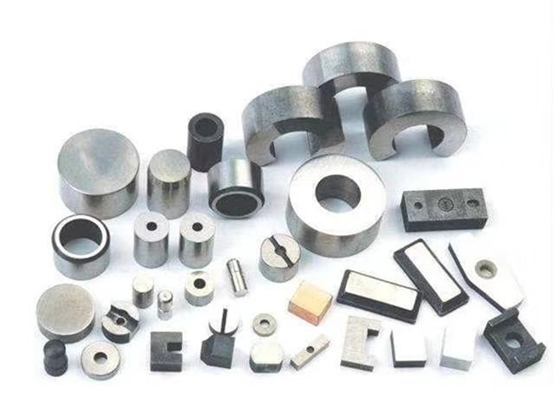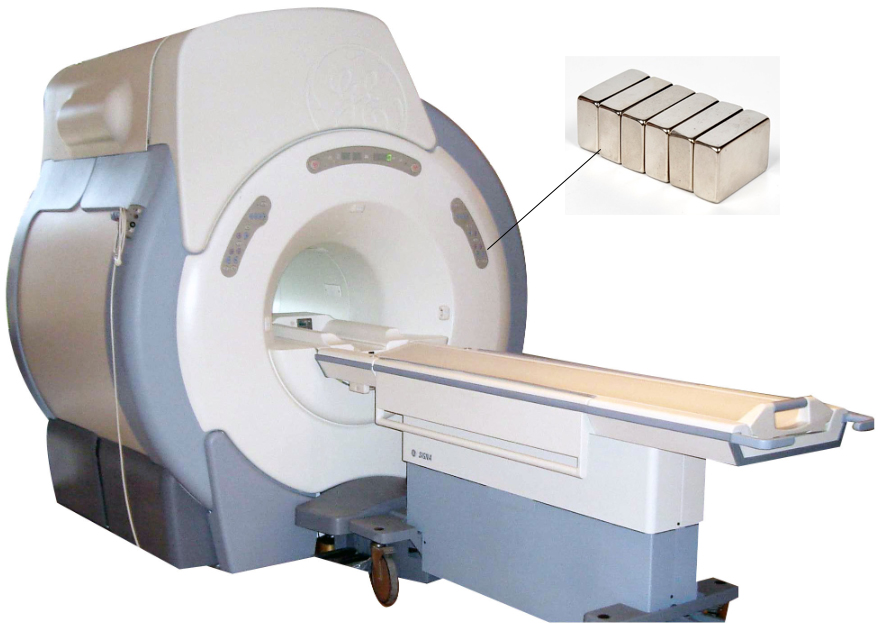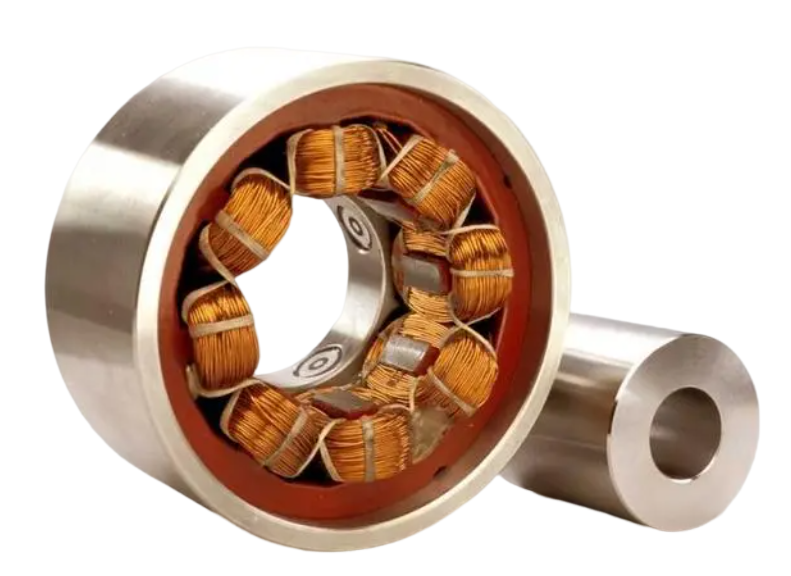
In the world of medical equipment, the use of magnets has become increasingly essential. Among the various types of magnets available, NdFeB magnets are considered the most powerful and reliable. NdFeB magnets are made from a combination of neodymium, iron, and boron, which together create a strong magnetic force. This article will explore why NdFeB magnets are essential for medical equipment.
Magnetism is an essential element in many medical devices. For example, magnetic resonance imaging (MRI) machines use strong magnets to create detailed images of the body's internal organs and tissues. Other medical equipment that uses magnets includes pacemakers, magnetic drug delivery systems, and magnetic hyperthermia devices.
The use of magnets in medical equipment has revolutionized the field of medicine. In the past, doctors had to rely on X-rays and other imaging techniques to diagnose and treat medical conditions. However, these techniques were limited in their ability to provide detailed images of the body's internal structures. With the advent of MRI machines, doctors can now create high-resolution images of the body's organs and tissues, allowing for more accurate diagnoses and better treatment options.
NdFeB magnets are among the most powerful and reliable magnets available. They are made from a combination of neodymium, iron, and boron, which together create a strong magnetic force. NdFeB magnets have several advantages over other types of magnets, including:
High magnetic strength: NdFeB magnets are the strongest magnets available, with a magnetic strength of up to 52 MGOe (Mega Gauss Oersteds). This makes them ideal for use in medical equipment that requires a strong magnetic force, such as MRI machines.
High resistance to demagnetization: NdFeB magnets have a high resistance to demagnetization, meaning they retain their magnetic strength over time. This makes them ideal for use in medical equipment that needs to maintain a consistent magnetic field, such as magnetic drug delivery systems.
Small size: NdFeB magnets are small and compact, making them ideal for use in medical equipment that needs to be portable and lightweight, such as magnetic hyperthermia devices.
Cost-effective: NdFeB magnets are cost-effective compared to other types of magnets, making them a popular choice for medical equipment manufacturers.
NdFeB magnets have a wide range of applications in medical equipment. Some of the most common applications include:

Gradient Coils: Gradient coils are used to create spatial variations in the magnetic field, which are needed for imaging. NdFeB magnets are ideal for use in gradient coils because of their high magnetic strength and customizable shapes and sizes.
RF Coils: RF coils are used to transmit and receive radio waves, which are needed for imaging. NdFeB magnets are ideal for use in RF coils because of their high magnetic strength and resistance to demagnetization.
Shielding: NdFeB magnets can be used for magnetic shielding in MRI machines, which helps to reduce interference from outside magnetic fields.
Magnet Assemblies: NdFeB magnets can be used to create magnet assemblies for MRI machines, which can be customized to meet specific imaging requirements.
One of the most promising applications of NdFeB magnets in MDDS is in the development of magnetic drug delivery systems. These systems use magnetic fields to guide drugs to specific locations in the body, which can improve the effectiveness of the treatment and reduce side effects. NdFeB magnets are ideal for use in these systems due to their high magnetic field strength and excellent magnetic stability.
Moreover, NdFeB magnets are also being used in the development of magnetic hyperthermia therapy systems, which use magnetic fields to generate heat and destroy cancer cells. The high magnetic field strength of NdFeB magnets allows for more precise and effective targeting of cancer cells, which can improve the success rate of the treatment.
In addition to their use in medical devices and systems, NdFeB magnets are also being used in the development of magnetic sensors for medical applications. These sensors can be used to detect changes in magnetic fields, which can provide valuable information about the health of the body. NdFeB magnets are ideal for use in these sensors due to their high magnetic field strength and excellent magnetic stability.
Magnetic hyperthermia therapy is a promising cancer treatment that uses magnetic fields to generate heat and destroy cancer cells. The success of this treatment depends on the strength and stability of the magnetic field, which is where NdFeB magnets come in. NdFeB magnets are made up of a combination of rare earth elements and have a high magnetic field strength, making them ideal for use in magnetic hyperthermia devices.
One of the main advantages of using NdFeB magnets in magnetic hyperthermia devices is their high magnetic field strength. This property allows for more precise and effective targeting of cancer cells. The magnetic field generated by the NdFeB magnet can be focused on the tumor, inducing heat and causing the cancer cells to die.
Moreover, NdFeB magnets are also ideal for use in magnetic hyperthermia devices due to their excellent magnetic stability. This property allows the magnetic field to be maintained even at high temperatures and in harsh environments. Magnetic hyperthermia therapy requires the magnetic field to be stable and consistent throughout the treatment, and NdFeB magnets are capable of providing this stability.
In addition, NdFeB magnets are also lightweight and compact, which makes them ideal for use in portable magnetic hyperthermia devices. These devices can be easily transported to different locations and used in a variety of settings, such as clinics and hospitals. The small size and weight of NdFeB magnets also make them ideal for use in implantable magnetic hyperthermia devices, which can be placed directly into the tumor to provide localized treatment.
Furthermore, NdFeB magnets have a high resistance to demagnetization, which is an important property for magnetic hyperthermia devices. Demagnetization occurs when the magnetic field strength decreases over time, which can reduce the effectiveness of the treatment. NdFeB magnets are capable of maintaining their magnetic properties over long periods of time, ensuring that the magnetic field remains stable and consistent throughout the treatment.

Magnetic levitation devices use magnetic fields to suspend objects in mid-air, and NdFeB magnets are ideal for use in these devices due to their high magnetic field strength and excellent magnetic stability.
One of the main advantages of using NdFeB magnets in magnetic levitation devices is their high magnetic field strength. This property allows for a strong magnetic force to be generated, which is necessary to support the weight of the object being levitated. NdFeB magnets are capable of producing strong magnetic fields, which makes them ideal for use in magnetic levitation devices.
Moreover, NdFeB magnets are also ideal for use in magnetic levitation devices due to their excellent magnetic stability. This property allows the magnetic field to be maintained even at high temperatures and in harsh environments. Magnetic levitation devices require the magnetic field to be stable and consistent throughout the levitation process, and NdFeB magnets are capable of providing this stability.
In addition, NdFeB magnets are also lightweight and compact, which makes them ideal for use in portable magnetic levitation devices. These devices can be easily transported to different locations and used in a variety of settings, such as scientific research, transportation, and entertainment.
Furthermore, NdFeB magnets have a high resistance to demagnetization, which is an important property for magnetic levitation devices. Demagnetization occurs when the magnetic field strength decreases over time, which can reduce the effectiveness of the device. NdFeB magnets are capable of maintaining their magnetic properties over long periods of time, ensuring that the magnetic field remains stable and consistent throughout the levitation process.
In conclusion, NdFeB magnets are essential for medical equipment because of their high magnetic strength, resistance to demagnetization, small size, and cost-effectiveness. NdFeB magnets have a wide range of applications in medical equipment, including MRI machines, magnetic drug delivery systems, magnetic hyperthermia devices, and magnetic levitation devices. As medical technology continues to advance, the use of NdFeB magnets is likely to become even more widespread in the field of medicine.
Contact: Alexander Sun
Phone: +86 19916725893
Tel: 0512-55128901
Email: [email protected]
Add: No.6 Huxiang Road, Kunshan development Zone, JiangsuShanghai Branch: No. 398 Guiyang Rd, Yangpu District, Shanghai, China